Black Friday 2025 has landed at Analogue Wonderland, bringing some of our biggest film photography deals of the year - from discounted film and cameras to money-saving WonderLab processing offers, exclusive bundles, and festive specials available for a limited time only. Grab a great deal while stocks last!
Recent posts
Shop the article
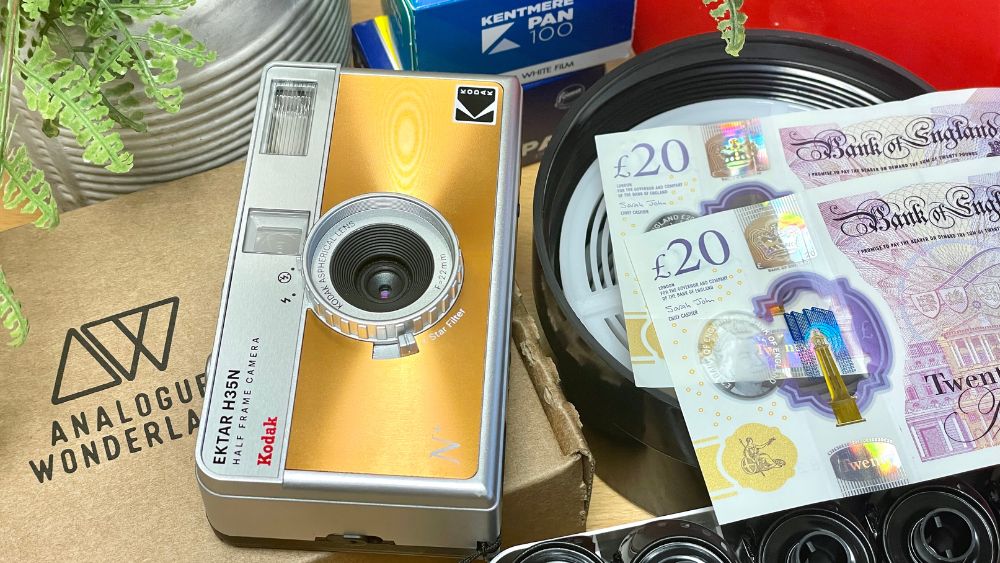
Keeping Film Photography Affordable: 10 Ways to Save Money
By Amy Farrer
Whilst we know that film is very much still alive and there’s many reasons why the analogue community continues to shoot film, there’s no denying the fact that it can be an expensive hobby - #ShootFilmStayBroke is for real! For some, those associated costs can become a deal breaker and even push them towards digital alternatives 😢 But the good news is, there’s plenty of ways to cut costs and keep your film journey alive 😅 By combining these money-saving strategies, you can make film photography a more affordable hobby after all! Read on for our top 10 tips to help you save money when shooting film, supported by us at Analogue Wonderland…
Tip 1: Use Half-Frame Cameras
Investing in a half-frame camera is a smart move since you get two images per frame, doubling your shots so you can get more bang for your buck! With half-frame photography, a 24-exposure film becomes 48 exposures, and a 36-exposure film gives you a whopping 72 frames. You can’t go wrong with that! And if you need the maths to back it up, we’ve already worked it all out for you here.
There’s plenty of half-frame cameras on the market too - including new models like the compact and affordable Kodak Ektar H35 and H35N, perfect for everyday use. But we can’t possibly talk about half-frame photography without mentioning the newest addition. The Pentax 17, released fresh from Japan in June, is a premium option that justifies its price by saving you money on film in the long run, offering more creative options, and a quality build.

From cheap and cheerful to worth the investment: the Kodak Ektar H35N and Pentax 17.
You can also find excellent pre-owned options on eBay or vintage camera shops and marketplaces. Models like the Olympus Pen F series and Canon Demi, with a bit of care, can become your perfect photography companions, helping you save with every shot you take.
Tip 2: Store Your Film in the Fridge
This one might seem a little strange if you’re new to film, but there’s a method to the madness! Storing your film in the fridge can extend its shelf life by slowing down degradation and preserving its speed, contrast, and effects. So if you want to get the best results from your film, keep it fresh!
Most films should be stored at around 2°C or lower. However, certain types like slide or movie film can be stored at 13°C for up to 3 months. If you need to store it for more than 3 months, Kodak recommends freezing it at -18°C to -23°C.
If you have a stockpile of film at home that you’re not planning to use soon, it’s a good idea to store it in the fridge. For added protection, consider using a 35mm or 120 film case to keep it safe from moisture and damage.
 I store my film securely in the fridge using the large yellow and red Kodak Film Case.
I store my film securely in the fridge using the large yellow and red Kodak Film Case.
That being said, many film photographers enjoy - or even prefer - the effects created by expired and/or damaged film. You can also get your hands on expired film for pretty cheap, if you’re looking for something different and experimental. But if your stock is fresh and pricey, proper storage is key!
Tip 3: Buy Bulk Rolls of Film
If you're a frequent film shooter and not particularly interested in experimenting with the latest emulsions, investing in bulk rolls of film could be a good option. Take, for example, the Kentmere 400 35mm bulk roll, which is priced at £70 for 100 feet (or 30.5 meters). By spooling this amount of film into 36-exposure cartridges, you can produce approximately 18 rolls. This works out to just £3.88 per roll, compared to the standard £5.50 per 36-exposure Kentmere 400 roll.
 New in stock: Ilford Delta 100 Bulk Film!
New in stock: Ilford Delta 100 Bulk Film!
However, keep in mind that purchasing bulk rolls requires some preparation and maintenance to get your 35mm rolls ready for shooting - plus a bit of time and patience! Here's what you'll need to get started:
- A bulk roll of 35mm film in your preferred type
- A bulk film loader - these can be found on eBay or through resellers
- Empty 35mm film canisters
- A pair of scissors and some tape
In addition to cost savings, rolling your own film offers other advantages, such as enhancing the tactile experience of shooting with film and giving you more control over the process. Neil Piper, one of our longtime ambassadors, highlighted these benefits from his own experience - you can learn more about his insights here.
Tip 4: Shoot More B&W Film
For many of us, the journey into film photography began in the darkroom, where we first developed black and white film and created prints by hand. Whether this was during college or a shared experience with your parents as a child, black and white film was often where it all started. That was certainly the case for me - when I studied photography at college, I had no idea just how many different emulsions existed, let alone colour films! I shot the cheapest, readily available films, typically Kentmere 400 and Ilford HP5, which were provided by my college. But there's a vast world of black and white films out there, and if you're unsure where to begin, check out our top picks for monochrome films!

Some of the cheapest 35mm and 120 black and white emulsions: Ilford HP5; Kentmere 400 and 100; Fomapan 100, 200 and 400; and Adox Scala 50.
When you can pick up a roll of Kentmere for under £5, it’s an easy choice! If you're just getting into film photography or want to test out a new camera, opting for these more affordable emulsions is a smart move. Plus, if you're looking to go back to basics by simplifying the process and challenging yourself to capture your surroundings in B&W rather than colour, then its affordability works in your favour!
Black and white films are generally less expensive than colour films, making them a great starting point. However, while the film itself might be cheaper, developing it can be a tad more expensive. This leads us to the significant cost benefits of developing your films at home… especially B&W!
Tip 5: Develop Your Films at Home
Setting up your own darkroom is exciting and can save money over time, but don’t forget that there will be initial equipment and setup costs. Essential items include a changing bag, film developing tank, measuring cylinders, a thermometer, and a timer - plus other optional items that can help compliment the process, too.
Beyond cost savings, developing your own film gives you the satisfaction of hands-on involvement and full control over your images. The thrill of watching your images come to life, especially when printed in the darkroom, is unmatched. That’s why tactility is one of the key reasons why people shoot film! For colour film, the process is trickier due to precise temperature control and extra steps, but it’s worth trying if you’re up for the challenge.
Consider visiting a community darkroom like the Shoreditch Academy of Image Making (SAIM) to see the process first hand under the watchful eye of a team of experts who’ll let you in on all there is to know about home development. For more on the importance of community darkrooms, watch our Click & Chat with SAIM founders Ian “Jacko” Jackson and Adrian Mott below.
Save on Film with Analogue Wonderland
At Analogue Wonderland, we’re dedicated to making analogue photography fun, affordable, and accessible for everyone. We offer regular deals, bundle discounts, Club AW rewards, and WonderPoints to ensure that the joys of shooting on film are within reach for all. Whether you’re just starting out or a seasoned film enthusiast, we’re here to support your creative journey while helping you save along the way. Here’s 5 ways you can save money when you shop with us specifically!
Tip 6: Join Club AW and Earn WonderPoints
We have our very own loyalty program designed to reward you, our amazing film community! We know that shooting film can be tough on your wallet, so we’ve created Club AW and the WonderPoints scheme to help you save as you shop. Just start saving in three easy steps:
- Join - Sign up for a free Analogue Wonderland account and start earning WonderPoints instantly. You'll receive 100 points just for joining and become a Club AW Candidate!
- Earn WonderPoints - Collect WonderPoints with every purchase or by completing WonderTasks. Reach 500 points to unlock an invitation to Club AW.
- Redeem and Save - Use your WonderPoints to get discounts in our shop and lab, or grab a monthly discount code exclusive to Club AW members.
As a member of Club AW, you’ll enjoy exclusive perks like monthly deals, early access to events and competitions (such as monthly Click & Chats, photowalks), and priority updates on film photography news, helping us shape the future of the analogue community.
Connect with fellow enthusiasts by joining our private Facebook Group and Discord channel - details will be sent via email after you sign up.
Tip 7: Sign Up To Our Mailing List
If you’ve signed up to our mailing list through the popup box / subscribe banner on our homepage or just created a new Analogue Wonderland account, welcome to the AW family 👋 You’ll now receive the latest updates on new deals, blog content, and product releases straight to your inbox, helping you save on film. Keep an eye out! As a new subscriber, you'll also receive a code to claim a FREE roll of select 35mm or 120 film to kickstart your journey.
As both an email subscriber and Club AW member, you get double the perks - first access to our latest offers! So, be sure to watch your inbox closely to start saving.
 Get a FREE roll of film when you sign up to our newsletter! A promotion running in Summer 2024
Get a FREE roll of film when you sign up to our newsletter! A promotion running in Summer 2024
Tip 8: Browse Our Deals on Film
We’re always working with brands and suppliers to secure the best deals and lower prices for you. To stay updated, sign up for our newsletter and follow us on social media to make the most of our offers while stocks last! If you’re a sucker for a sale or just have a budget to stick to, have a look at our Deals on Film collection, which is regularly updated with new discounts. You can also filter products by price to find what fits your budget.
And of course, as a Club AW member, you’ll unlock even more exclusive deals on film! These monthly offers feature discounts on a variety of products, perfect for every type of film shooter - whether you’re a pin collector, 35mm film enthusiast, or a regular user of our WonderLab!
Tip 9: Shop Our Film Photography Bundles
Feeling overwhelmed by all the choices and unsure where to start? Well, you should check out our film photography bundles! Pair them with our Beginners Hub and Wall of Inspiration, and you'll be on your way to starting your film journey in no time. Plus, our bundles offer built-in savings, making your decisions easier and more affordable - what’s not to love?
If you've had your eye on the Pentax 17 since its release in June, this bundle is a must-have - with FREE rolls of Kodak Gold and Ilford HP5! Or, if you're inspired by Miles at Expired Film Club’s sports and music photography and fancy giving it a go yourself, check out our high-speed 35mm film bundle.

Explore our range of bundles with film, cameras and accessories.
Tip 10: Try Our Mystery Box
One bundle that should be on every film photographer's wishlist is our Film Mystery Box. Perfect for those who love a challenge, feel overwhelmed by the vast selection of films, or simply enjoy surprises, the Film Mystery Box offers a curated mix of 4 x 35mm or 4 x 120 films, including both colour and B&W. With built-in discounts, it’s a great way to save while discovering new favourites.
Here’s what Brian M., one of our community members, had to say in his 5-star review: “Getting back into film can be a challenge when selecting what film stock to choose. The Mystery Box does that for you with a selection of colour and black & white. My box contained both the familiar and the downright unknown to me which was great as I now have a couple of new favourites that I may never have tried otherwise. Highly recommended.”
While film photography can be an expensive hobby, adopting these tips can help to make it more affordable without compromising on the joy and creativity it brings. From investing in half-frame cameras and storing your film correctly, to buying in bulk and developing your own film at home, there are practical strategies to cut costs.
At Analogue Wonderland, we're committed to supporting your film journey with exclusive deals, rewards, and resources that help you save money while indulging your passion. Whether you’re a film newbie or have been shooting for years, we’re here to make film photography accessible and enjoyable for everyone. So, embrace these money-saving tips to let your creativity flourish without breaking the bank!
Are there any tips we’ve missed? Sharing is caring 🥰 drop them in the comments!
Ready to dive in?
Keep Reading
View all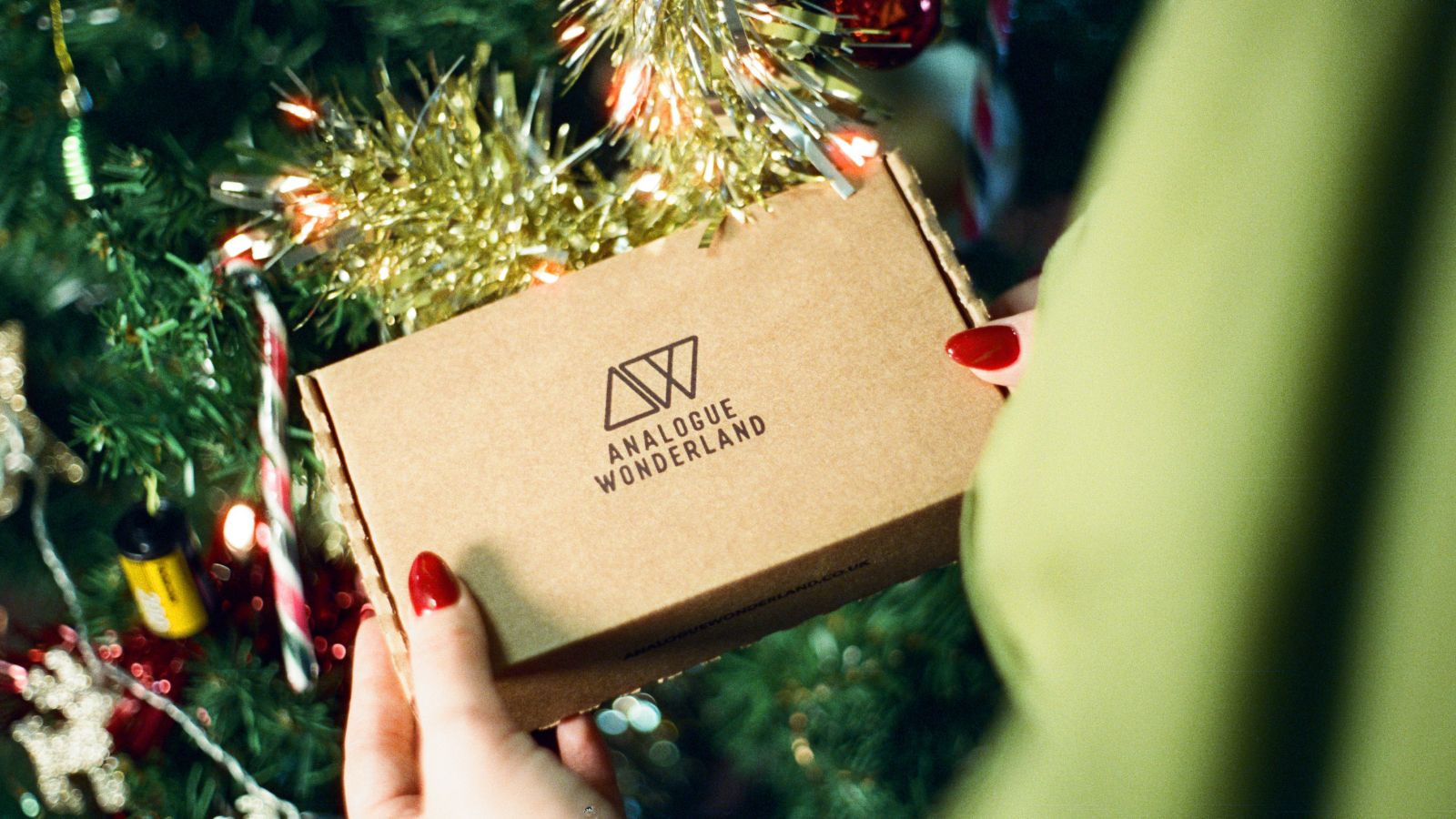
Christmas 2025: Shipping & Opening Hours
Christmas 2025 is fast approaching! To make sure your analogue goodies arrive in time, take note of our last shipping dates, plus opening and operating hours over the festive season. We've got everything you need to gift the magic of film photography this Christmas!

Film Photography Christmas Gift Guide 2025: Analogue Wonderland
Capture the magic of Christmas with film - no filters needed. Our 2025 Film Photography Christmas Gift Guide 2025 is packed with thoughtful presents for every type of shooter, from curious beginners to seasoned photographers. Discover film stocks, cameras, and creative accessories that will make this festive season truly memorable.
Subscribe to our newsletter 💌
Sign up for our newsletter to stay up to date on film photography news, sales and events:
Free Tracked Shipping
On all UK orders over £50
Passion For Film
An unbeatable range and an on-site lab
Our Customers Trust Us
Thousands of independent 5* reviews
All Deliveries are Carbon Neutral
Independently audited and verified by Planet
- Opens in a new window.




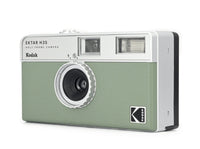
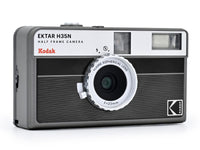

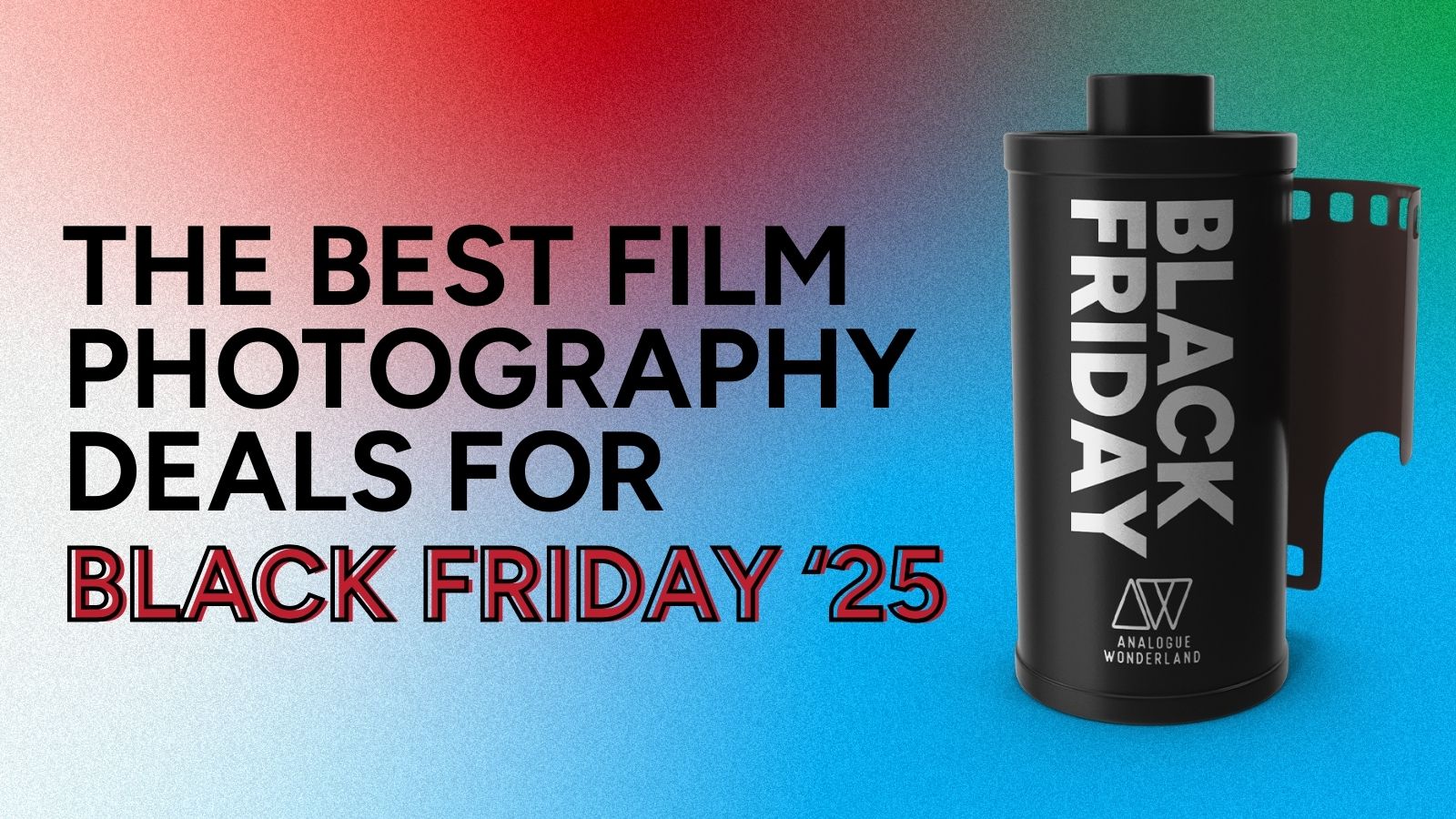
6 Comments -
Michael Cox • -
Mark Andrew • -
Roy Bartlett • -
Fred Overton • -
Alan •
1 2 →
Being of an age where my “formative photo years” were all analog because there was NO alternative, ie, digital hadn’t been invented, I am bemused by its resurgence. And I do miss that feel of loading a film, and the winding forward, the harder press on a shutter release, the not-knowing until I got the film back (or developed it myself). But the limitations! It’s like the limitations with the monochrome Leica and Pentax models—if you enjoy being boxed in like that and find it enhances your creativity, go for it. But with a high-megapixel camera I can have colour and black and white, crop in tight, add realistic film grain or not, use one of the good film emulations (digistock; Mastin Labs). There is certainly a magic to shooting film, and its limitations provoke many creative responses, but I’m fine with my GFX and X100vi and Capture One and all that they can do. Then why was I even on this site? Ahh…there’s the rub. I’d still like to have a film camera and 20 rolls in the fridge, but alas, I cannot afford it.
I would order a lot more film frrom Analogue Wonderland if it wasn’t shipped from outside the EU, thus making me pay VAT and taxes on the packages I receive from them here in Denmark. Just another Brexit kick in the pants.
As an antidote to some of the negative comments my photography has been positive and joyous for at least 71 years, starting with a Browney 127 through various 35 mm SLR capers then moving to Nikon F them came digital so bought a little used second hand Nikon D7000, when contemplating an up grade to a mint D810 I realised I would get little for the D7000 so kept both. Sadly at least 35 years ago I sold / gave away all my darkroom equipment, particularly annoying considering repairing to return to B&W 35 mm with my dream camera arriving soon.Regards to all film buffs.Roy
So half of these tips (6-10) are actually just sales promotions, and the first five are pretty questionable. Use a half frame camera? Well if you can live with the limitations, but shooting film is about expanding your creativity isn’t it? Shoot more black and white? Why? B+W processing is usually more expensive than colour. Save money by developing at home? What about the initial costs of all the equipment you will need? And the time it takes to get successful results? Try out of date films? Being fashionable they are at a premium on places like eBay, not cheap at all, and come with some associated risk as to the results. How about: ‘buy rolls of 36 rather than 24 shots’, because the processing cost is the same (unless you want all hard copy prints). How about: ‘make sure you are fully up to speed on using your camera in all situations, to avoid wasted shots’? How about: ’don’t snap away like you would with your phone, take your time framing and setting up your shots’, likewise to avoid wasted frames. How about: ’don’t pay up front for prints, get films developed and scanned so you can see them on your computer, then if you wish, select just the best ones for printing’? And maybe some advice on buying used vintage cameras, so you don’t waste your money on a dud. Come on guys, you can do better.
1. Stockpile film in the freezer bought pre- and mid-pandemic when prices were going up and supply was running out everywhere.
2. Gradually switch over more and more to using digital now when you begin to realise shooting and developing colour film will still be financially unsustainable, despite having stockpiled (slightly) cheaper film a few years back.
3. Begin to wonder what on Earth you are going to do with those hundreds of rolls of film now sitting in your freezer, given the carefree enthusiasm you once had for shooting colour film at 20p (all inclusive) a shot back in 2018 has long evaporated 🤔